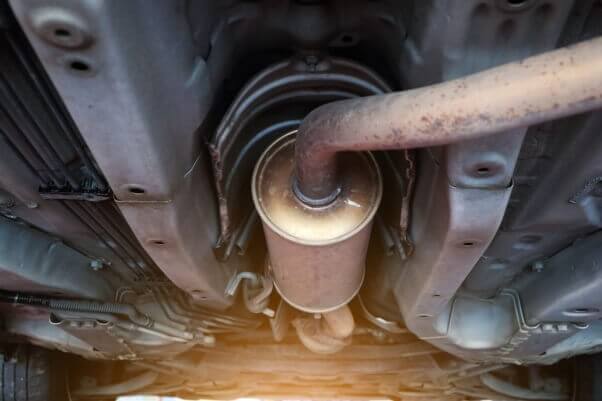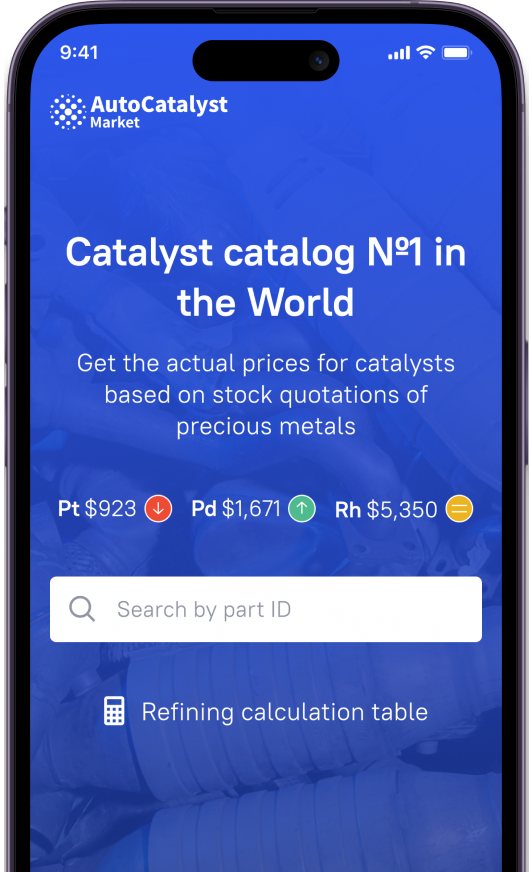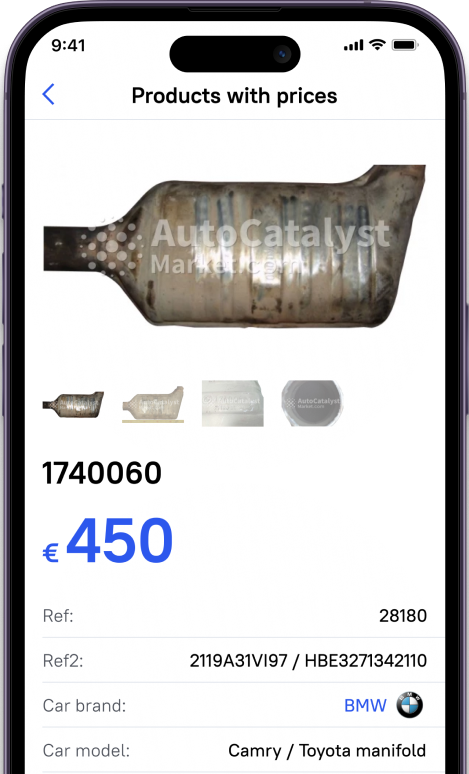- Why Are They Called Torpedo Catalytic Converters?
- Benefits of Torpedo Converters
- Limitations and Drawbacks
- What Ford Vehicle has a Torpedo Catalytic Converter
- How To Find Torpedo Cat Serial Number
- What Is A 4-Biscuit Torpedo Catalytic Converter?
- What's the Value of Torpedo Catalytic Converters on the Market?
- How to sell?
Torpedo catalysts are usually larger units compared to conventional catalytic converters. Usually, these uncommonly shaped catalytic converters come from Ford vehicles and are made for specific Ford cars with large engines. Today we get to know why are they called this way, understand the value inside, how to find serial numbers, see the cons and pros and what is the best treatment for these units after failure.
Why Are They Called Torpedo Catalytic Converters?
The name "torpedo" for catalytic converters draws from their shape and function. Shaped like elongated cylinders akin to torpedoes, these converters swiftly and efficiently transform harmful emissions into less noxious compounds. The moniker "torpedo" underscores their streamlined, cylindrical structure resembling the underwater projectile, accentuating their ability to swiftly process and neutralize pollutants within a vehicle's exhaust. This nomenclature encapsulates both their form and their purpose, suggesting a dynamic, efficient conversion process reminiscent of a torpedo's rapid movement, albeit in the context of environmental mitigation within automotive systems.
Benefits of Torpedo Converters
The shape of the torpedo comes both with pros and cons. Let us first see the pros first:
- Torpedo catalytic converters boast efficient design, promoting better exhaust flow and enhanced emission conversion.
- Their elongated shape allows for increased catalyst surface area, improving pollutant conversion and aiding in reducing harmful emissions.
- Additionally, considering the large size of the catalyst allows you to get more profit from recycling a worn-out unit.
Limitations and Drawbacks
However, there are also drawbacks coming from the benefits:
- Their elongated form might pose installation challenges in certain vehicles, impacting the ease of fitting within exhaust systems.
- Due to their larger size and increased catalyst material, they can be more expensive than traditional converters, and that is also a reason to benefit from recycling used torpedo catalysts.
What Ford Vehicle has a Torpedo Catalytic Converter
Torpedo-style catalytic converters, a prevalent fixture in the automotive landscape, notably grace an array of cars and trucks. Within the realm of Ford, these converters find their niche primarily within the esteemed Eco Vans and the formidable F-Series trucks.
In the realm of the F-Series, various models stand adorned with torpedo-style catalytic converters, exemplified by:
- Ford F-150
- Ford F-250
- Ford F-350
- Ford F-450
- Ford F-550
Similarly, the E-Series Vans also integrate these converters into their mechanisms, featuring prominently in:
- Ford E-350
- Ford E-450
This distinct choice of converter aligns with vehicles sporting robust engines, predominantly V-shaped eight-cylinder or V-shaped six-cylinder powerhouses. The torpedo catalytic converter is meticulously designed to harmonize with these engine configurations, diligently curbing and ameliorating the emission outputs characteristic of such potent machinery.
How To Find Torpedo Cat Serial Number
- Usually, torpedo “cats” have a small window on their casing, a slot you can look through to find a serial number stamped on the internal surface.
- If you can not see the number, you can take a crowbar and take the external casing cover (a shield) off of this torpedo catalyst. Taking the cover off will show you the biscuits inside — separations on the internal casing that pop up the surface of the internal casing. Try to find the place on the internal casing surface that matches the slot of the external cover and try to get rid of any dirt or corrosion on that spot to reveal the serial number.
- Besides, on the AutoCatalystMarket website, you can see what does a torpedo catalytic converter look like and identify your own torpedo cat by using images and comparing them to your catalyst.
What Is A 4-Biscuit Torpedo Catalytic Converter?
As we have mentioned above, torpedo catalysts usually contain biscuits inside. A traditional unit has three of them and has a space in between the rows. That place is designed for specific vehicles that require a fourth one to improve the exhaust system cleaning performance. A Ford torpedo 4 biscuit catalytic converter usually contains more platinum or palladium in this regard, hence it is more valuable.
What's the Value of Torpedo Catalytic Converters on the Market?
Ford torpedo catalytic converter scrap price varies significantly, spanning between $150 and $1000. Specifically, a well-maintained converter extracted from an E-350 truck typically falls within the $200 to $400 range. However, numerous factors dictate these prices, chiefly influenced by the vehicle's mileage. Crossing the 100,000-mile mark often signals potential catalyst deterioration, diminishing its value considerably to as low as $50 in such instances.
The serial number gives us a better idea of its value as the code contains valuable information. If you can not see the number, removing the cover reveals the interior bricks - partitions within the internal casing that protrude its surface. The more biscuits (bricks) the more value is there. Especially valuable are the 4-biscuit ones as they contain more precious metals.
How to sell?
Here is a simple step-by-step guide to selling your used torpedo catalytic converter on the AutoCatalystMarket website:
- Locate the serial number engraved on the casing.
- Input this unique identifier into our site's search function.
- Discover the catalyst's actual market worth, determined by Pt, Pd, and Rh rates.
- Securely sell it to a buyer at its genuine value, ensuring a profitable transaction!
Now let us elaborate a bit on these steps. The AutoCatalystMarket website provides valuable insides on quotes for catalytic converters of any type. Our library counts over 25,000 units with images that help to identify your catalytic converter. Identification is required to get the price for your specific catalytic converter. You can also do that by your catalytic converter manufacturer if you know or a car brand utilizing the search bar of the site. But the best way to identify is by having the serial number, which we have explained earlier.
As you get your catalyst identified and get the price, now you can select your region and the list of local buyer companies will appear. Choose a buyer near you and decide how to hand your used catalyst to them. Usually, it is shipping that requires accurate packaging and no sticking pipes or tubes. As the buyer receives your catalyst they will initiate the recycling process to understand the exact price and determine valuable content - platinum, palladium, and rhodium. Then you get a fair price based on that information and get paid right after.
Leverage AutoCatalystMarket to maximize your catalyst’s value from the comfort of your smartphone. This is a hassle-free way to get rid of your old “cat” while at the same time saving on purchasing a new one.









































